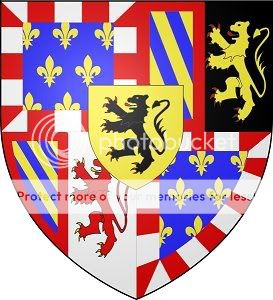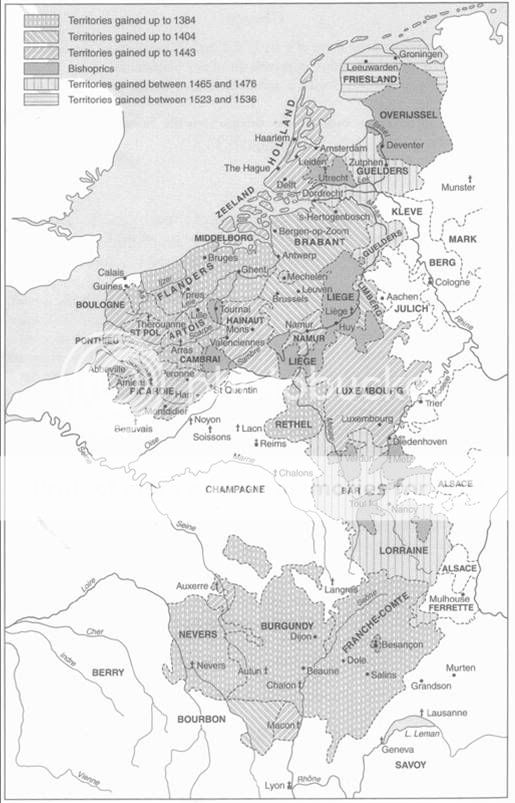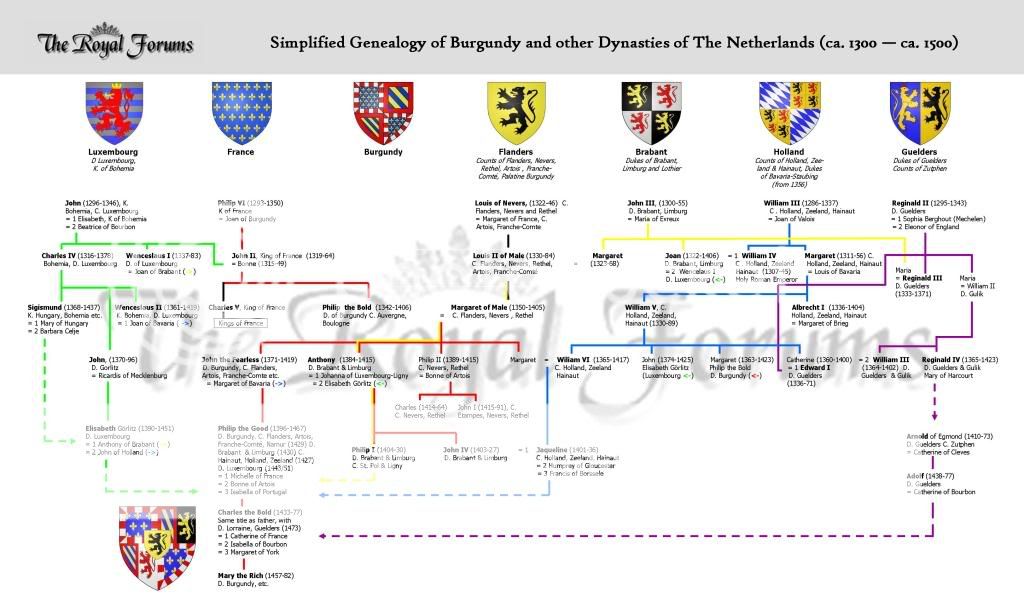Next Star
Courtier
- Joined
- Apr 29, 2006
- Messages
- 837
- City
- ******
- Country
- United States
What happened to the Duke of Burgundy and the rest of the ducal family are there are any descents still alive or did the family line die out?
Next Star said:What happened to the Duke of Burgundy and the rest of the ducal family are there are any descents still alive or did the family line die out?
Thanks, Avalon, for your indepth discussion on the French royalty of the past and their relationship with other countries/royals.Avalon said:The Duchy of Burgundy 'belonged' to several Houses.
Avalon said:Notes:
*Burgundian Netherlands - Union of 17 Provinces, covering (roughly) the current Netherlands, Belgium, Luxembourgh and parts of France (and a part of Germany, if I'm not mistaken).
* Low Countires - Historical region of de Nederlanden
* De Nederlanden - not to confuse historical Netherlands (covering most of the Burgundian Netherlands, including Low countires) and current country (which occupies only part of the historical one), the Dutch speakers usually speak of Nederland (singular) for the current country and de Nederlanden for the historic part. In English (roughly) Netherland (or Holland) for the current country, the Netherlands (plural) for the historic one.

Princess Robijn said:Not sure about others, but in English, at school we learned ALWAYS to use (The) Netherlands, never Netherland, with that, Holland is often used, but incorrect, Holland is just 1 of the provinces over here



Elizabeth II is officially styled 'Duke of Normandy' in Jersey and Guernsey (and 'Duke of Lancaster' in Lancashire).The queen of the united Kingdom is too styled the Duke of Burgundy.
The queen of the united Kingdom is too styled the Duke of Burgundy.
"a superb look at a long-gone empire and the mad dukes who ruled it [...] thrillingly colourful and entertaining too. [...] If there is any justice, a blockbuster TV series awaits.”

Queen Isabeau presided over the Council and it also included the kings brother Louis , Duke of Orléans and his 2 uncles Philip the Bold, Duke of Burgundy and John, Duke of Berry.Philip the Bold, Duke of Burgundy and John, Duke of Berry sat in council as Regents during the illness of King Charles VI of France.
Getty Images
Getty Images. Find high resolution royalty-free images, editorial stock photos, vector art, video footage clips and stock music licensing at the richest image search photo library online.www.gettyimages.com
